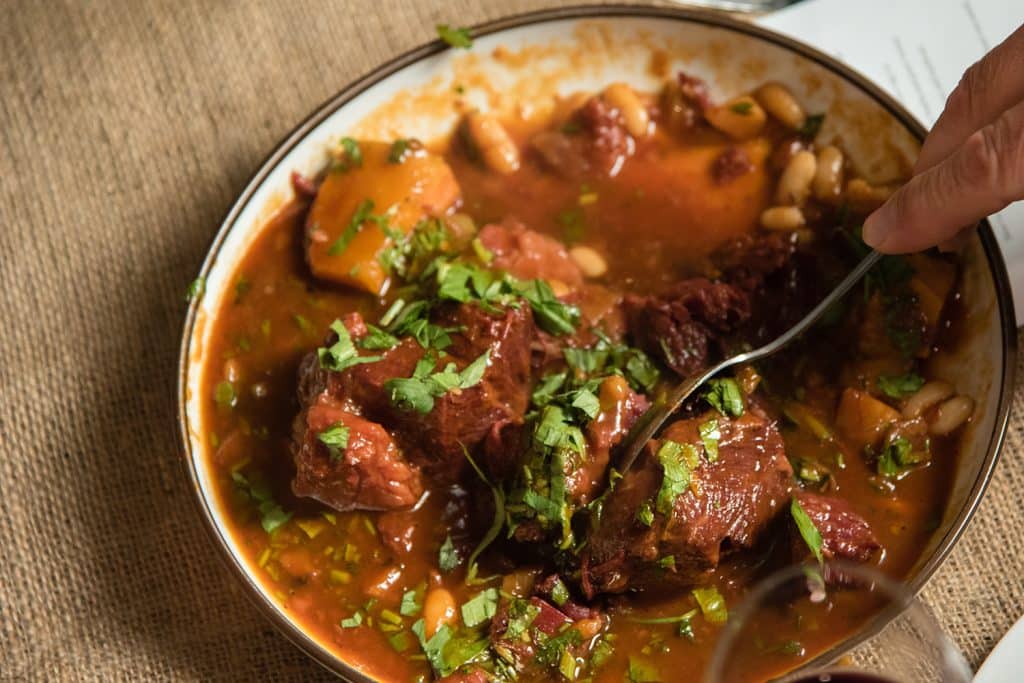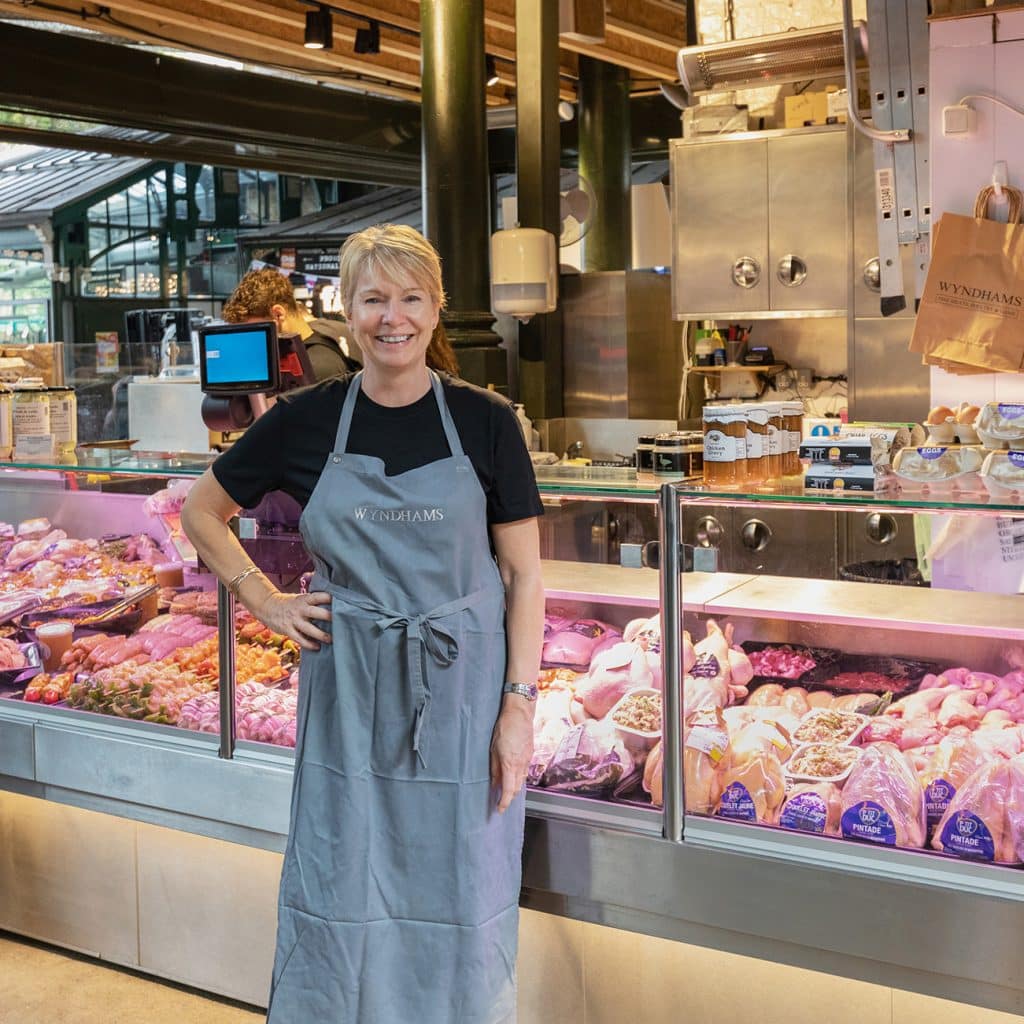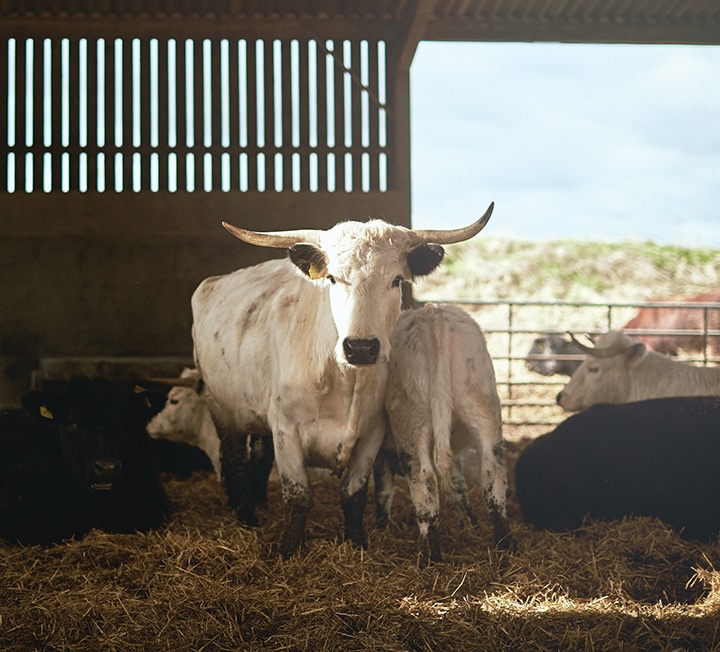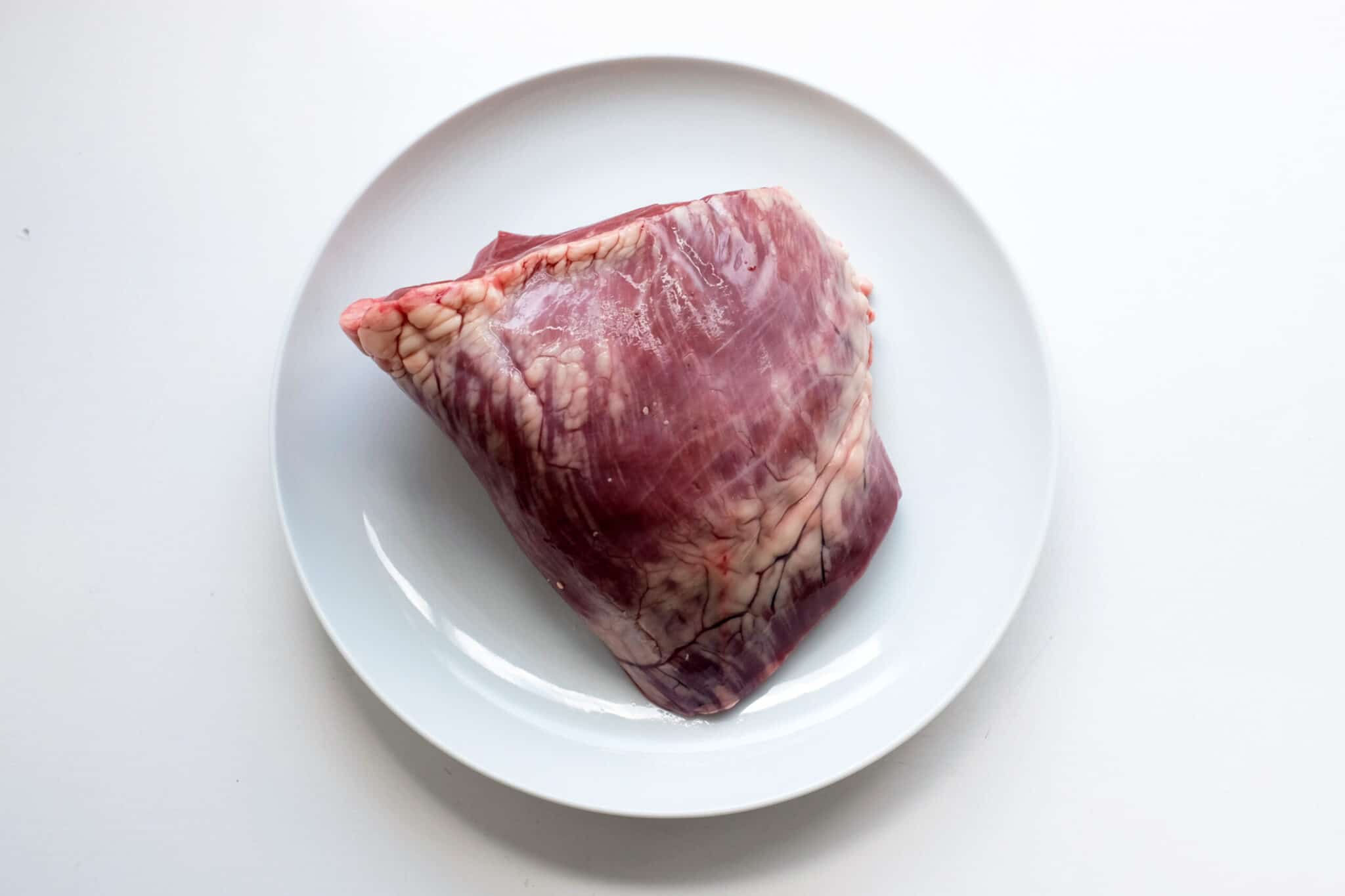Life in the slow lane
Borough Market’s butchers on the joys of slow cooking tough, fatty, richly flavoured cuts of meat


“WHEN IT’S COLD I TURN TO SLOW COOKING. IN COME THE STEWS, BRAISES AND SLOWLY ROASTED JOINTS.”
Words: Tomé Morrissy-Swan
It’s late on a cold, windy, rainy Thursday evening but tomorrow’s dinner is already on the go. Into the slow cooker go pearl barley, dry white beans, potatoes, paprika, fried onions and – the pièce de résistance – fatty bricks of well-browned beef short rib. A bit keen for Friday night dinner, you might think, but well worth the wait. The resulting cholent, a slowly simmering pot of culinary comfort popular among Ashkenazi Jews on the sabbath, is sublime: rich and unctuous, each ingredient tasting of every other, in a way only hours of cooking can provide.
When it’s cold I turn to slow cooking. Out go summery salads and grilled fish, replaced by stews, braises and slowly roasted joints. It’s not just me. By autumn, customers are “fed up to the back teeth of steak and salad”, says Tim Wilson, founder of Borough Market’s Ginger Pig butchers. “You want brussels sprouts and roast parsnips, and when that comes along, slow cooking comes back in.”

Almost every culture has a treasure trove of slow-cooked dishes. Often out of necessity, people who couldn’t afford or didn’t have access to prime joints turned to the tougher cuts, eking out flavour with time. From Brazilian feijoada to Asturian fabada, from salt beef to barbecue brisket, slow cooking can be found everywhere.
At Borough Market, Dominic McCourt is guiding me through the different cuts at Northfield Farm, a butcher’s stand where much of the meat comes from the family farm in Rutland. He sells more meat intended for slow cooking in winter, but not necessarily at the expense of the premium cuts. In the colder month, people spend more time at home, more time at the hobs, and eat more meat. Dominic points to oxtail, beef shin, short ribs, beef cheeks. “Chuck is a really good entry-level cut for slow cooking,” he explains. “It’s quite forgiving – you can do it in an hour or so.” His favourite is lamb neck cooked overnight, cooled, glazed with barbecue sauce then flash cooked. “The meat falls off the bone.”
‘Unfashionable’ cuts were once far more economical. When Tim Wilson launched Ginger Pig in the late 1990s, slow-cooking joints didn’t fly off the counter. “Years ago, a lady came into the shop and said: ‘I want a piece of belly pork, please,’” he recalls. “The next person in the queue said: ‘I give that to my dogs.’” At the turn of the century that began to change. “All of a sudden, shoulder became more popular than leg,” says Tim. Why did things change? “Jamie Oliver. It was chefs.”
Price gaps have contracted but, overall, tougher cuts are still cheaper. “You’re still looking at roughly a third of the price for shin versus a ribeye,” says Dominic. “It’s still worthwhile financially.” There are exceptions, like oxtail, once cheap but now increasingly costly for what is mostly bone. Brisket, on the other hand, is still good value and practically all meat.
Heart and tongue are currently seeing increasing demand at Northfield Farm. Today’s trendiest cut, though, is ox cheek, spurred on by chefs and their obsession with cheek ragus. “We’ve got a massive demand now, more than we ever have,” says Dominic. Tim agrees: “We probably sell as much ox cheek as fillet steak.”

Slow cooking evokes beef, lamb and pork, whether stewed, curried or roasted. But one of the best dishes I’ve made was a 10-hour roast chicken in a clay pot. It simply disintegrated, in a good way. “You can slow roast any bird and it will just fall off the bone,” says Lin Mullet, founder of Wyndham House Poultry. Lin likes to roast duck legs marinated in Chinese five spice at 150C for a couple of hours. “The flavour intensifies. It’s absolutely lovely. It’s not something you need to stress about – you don’t need to be a clever cook to do it.”
Slow cooking is forgiving. Going over won’t affect the outcome, as long as the pot doesn’t dry out – it’s much harder to ruin a stew than a steak, even though cooking it requires more planning. Roast chicken convention says to cook fast for crisp skin and succulent breast but, according to Lin, slowly reared premium poultry have the texture and bone structure to withstand time. “Pot roasting is brilliant. A layer of vegetables, put the bird on top, liquid halfway up to the side of the bird, and they can be in there for quite a long time,” she explains. “That’s across all birds.”
Darren Brown, founder of Shellseekers Fish & Game, is rare among London’s butchers and fishmongers: he dives for scallops off the south coast and is a professional stalker with deer-culling contracts. He explains that 750,000 deer need to be culled per year, due to the environmental havoc they cause: “We need to eat our problems.”
Sika and red deer are the main species at Shellseekers, and Darren is enthusiastic about slow cooking them. “Why treat it any differently? It’s the same setup. You’ve got shanks, necks, shoulders, all of which require slow cooking.” They can be marinated in the same way as lamb. Slow-roast sika deer, he says, “pulls off the bone”.
In a cost-of-living crisis, leaving the oven on for hours may be a challenge, but there are countless ways to slow cook. Low and slow on induction may not be as charming as a battered old dutch oven in an Aga, but the results are similar and the bill considerably lighter. A slow cooker comes out cheaper, too, as does a pressure cooker, speeding up the process but providing the same outcome. And slow cooking is much better for leftovers – you can do a lot more with succulent pulled pork than dried-up slices of roast beef.
Back in my kitchen I’m making a Tuesday-night dinner in the morning. I brown the brisket before frying off onions. In throw in carrots, thyme, bay and stock. They get well acquainted in the oven before I pop in some dumplings. Slow-cooked beef and dumpling stew on a cold winter night? Until the sun comes out again, I’ll take that every time.


